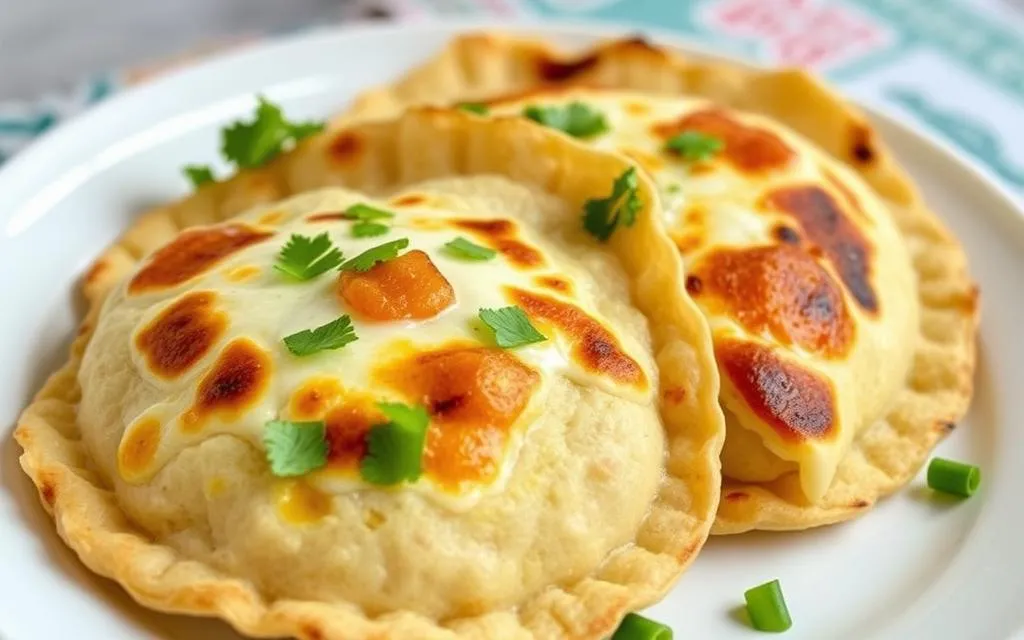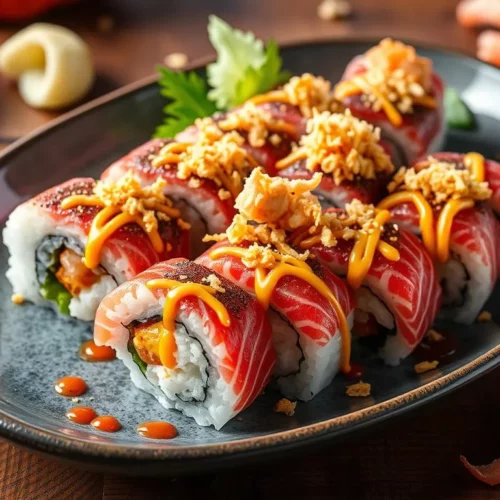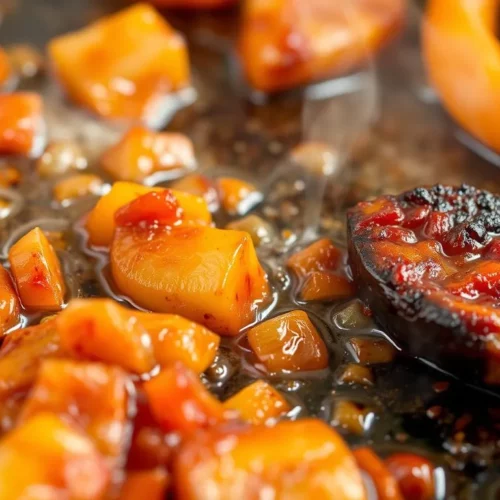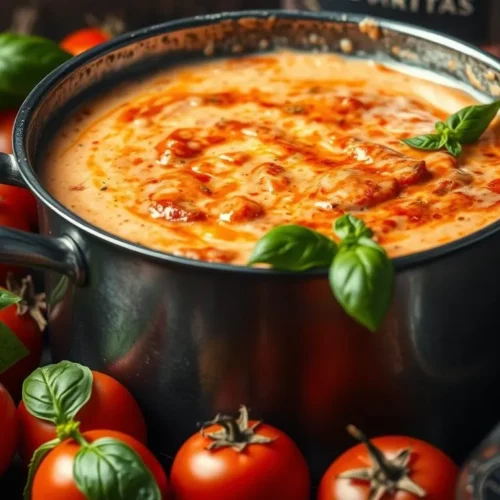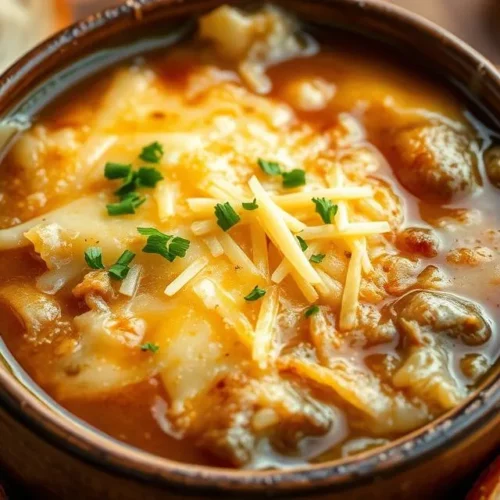Are you a fan of pupusas, the beloved Salvadoran dish? But you don’t have masa harina flour? You’re in luck! We’ll show you how to make tasty pupusas with regular all-purpose flour. We’ll cover the key ingredients, preparation methods, benefits, and drawbacks.
Pupusas are a staple in Salvadoran cuisine. They’re known for their soft, fluffy texture and savory fillings. Traditionally, they’re made with masa harina, a special corn flour. But can you make them with regular flour? Let’s explore!
Understanding Pupusas: A Classic Salvadoran Dish
Pupusas are a favorite in Salvadoran food, loved for their special tastes and textures. These thick, handmade corn tortillas are filled with things like refried beans, cheese, pork, or veggies. They offer a tasty and unique eating experience.
Ingredients and Preparation Methods
Making real pupusas starts with the dough, made from masa harina, a special corn flour. This flour makes pupusas taste and feel unique. To make them, dough is shaped into balls, flattened, filled, and then cooked on a griddle or comal.
- Traditional pupusa fillings include:
- Refried beans
- Cheese
- Pork
- Vegetables
- The dough is made from masa harina, a specially prepared corn flour.
- Pupusas are formed by hand, flattened, filled, and then cooked on a griddle or comal.
Pupusas have a rich history and cultural importance in Salvadoran cuisine. They are a dish that many people love, both locals and visitors. With so many fillings to choose from, there’s a pupusa for everyone.
The Traditional Masa Harina vs. Regular Flour Debate
Making authentic pupusas often means using masa harina, a special corn flour. This flour is nixtamalized, making it pliable and slightly chewy. Some wonder if regular flour can replace masa harina in this traditional Salvadoran dish.
The debate on using masa harina versus regular flour for pupusas is ongoing. Traditionalists say masa harina’s unique properties are key to the pupusa’s texture and flavor. Others find success with regular flour, citing cost and accessibility.
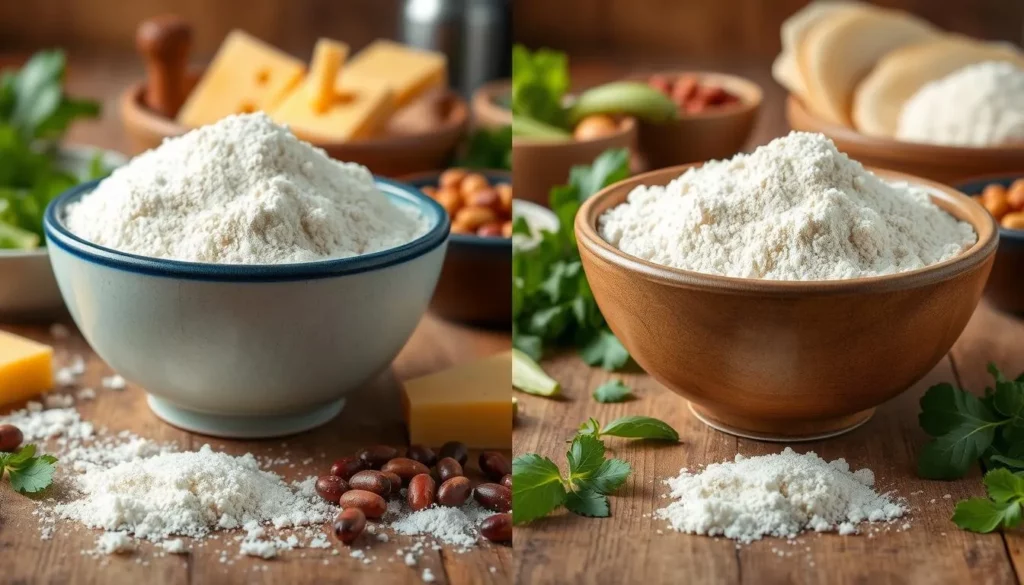
To understand this debate, let’s look at the differences between masa harina and regular flour. We’ll also explore the benefits and drawbacks of each in making pupusas.
The Unique Properties of Masa Harina
Masa harina is a special corn flour made through nixtamalization. This process cooks and soaks the corn in lime water. It breaks down the corn’s outer hull, releases nutrients, and gelatinizes the starch. This makes the dough pliable and slightly chewy, essential for traditional pupusas.
- Masa harina gives pupusas a unique texture and flavor that regular flour can’t match.
- The nixtamalization process also makes masa harina more nutritious than regular flour.
- Masa harina is a key ingredient in many Salvadoran dishes, not just pupusas.
Exploring Substitutes for Masa Harina
Some cooks use regular all-purpose flour instead of masa harina for pupusas. This might be due to cost, availability, or personal taste.
- Regular flour doesn’t have masa harina’s unique properties, leading to a different dough texture.
- Using regular flour can also change the pupusa’s flavor, as nixtamalization adds a distinct taste.
- Despite this, some cooks successfully use regular flour, adjusting the dough to get a tasty result.
The choice between masa harina and regular flour for pupusas depends on personal preference and desired authenticity. Knowing the differences and potential trade-offs helps cooks make the best choice for their cooking goals.
Exploring the Benefits of Using Regular Flour
Regular flour is a great alternative to masa harina for making pupusas. It’s cheaper and easier to find, making it a favorite for many home cooks.
Cost-Effectiveness and Accessibility
Regular flour is cheaper and easier to find than masa harina. This makes it a smart choice for those who want to save money. It’s also a staple in most grocery stores, making it easy to get.
Using regular flour for pupusas has more benefits than just saving money. It’s also more convenient for those who don’t like or can’t find masa harina. This makes it easier for more people to try making pupusas at home.
While masa harina is traditional, regular flour offers new possibilities. It lets home cooks make delicious pupusas without needing a special ingredient. By using regular flour, home cooks can enjoy pupusas in a cost-effective and accessible way.
Potential Drawbacks of Substituting Masa Harina
Using regular flour for pupusas is easy, but it has downsides. Masa harina, a special cornmeal, is key for the real taste and feel of pupusas.
Regular flour can’t make the dough as soft and chewy as masa harina. The dough might break easily or crumble when cooked. This can ruin the pupusas’ look and feel.
The taste of pupusas, thanks to masa harina, is hard to get with regular flour. Masa harina gives a special flavor that’s essential for the true Salvadoran taste. Using regular flour might make pupusas taste less authentic.
In short, while regular flour is easy to use, it changes the texture and flavor differences of authentic pupusas. For those who want the real deal, getting masa harina is worth it. It keeps the tradition and taste of this beloved Salvadoran dish alive.
| Masa Harina | Regular Flour |
|---|---|
| Provides traditional texture and flavor | May result in less chewy, more crumbly dough |
| Imparts authentic Salvadoran taste | Lacks the distinctive cornmeal flavor |
| Ensures pliable, elastic dough | Dough may be less pliable and prone to falling apart |
Techniques for Making Pupusas with Regular Flour
You can make tasty pupusas with regular flour, even without masa harina. The trick is to adjust the dough’s consistency and texture. This way, you can get a feel similar to the traditional ones.
Adjusting Consistency and Texture
When using regular flour, pay close attention to the dough’s consistency. Start by adding a bit more water than the recipe suggests for masa harina. This helps balance out the dryness of regular flour.
Knead the dough well to develop the gluten. This makes the dough more pliable and stretchy, just like masa harina.
Let the dough rest for 30 minutes to an hour before shaping. This allows the gluten to relax and the flour to hydrate fully. This makes the dough smoother and easier to work with.
- Add extra water to the dough to compensate for the dryness of regular flour.
- Knead the dough extensively to develop the gluten and create a more pliable texture.
- Allow the dough to rest for 30 minutes to an hour before shaping the pupusas.
Using these techniques, you can get the right consistency and texture with regular flour. Your pupusas will be delicious and capture the spirit of traditional Salvadoran pupusas.
make pupusas with regular flour
Enjoying pupusas, a classic Salvadoran dish, doesn’t require special masa harina flour. You can make tasty pupusas with regular all-purpose flour. Just follow these easy steps to learn how to make pupusas with regular flour.
- In a large bowl, mix 2 cups of all-purpose flour, 1 teaspoon of salt, and 1 cup of warm water. Knead the mixture until it forms a smooth, elastic dough.
- Cover the dough and let it rest for 30 minutes. This allows the flour to fully hydrate.
- Divide the dough into 8 equal portions and roll each one into a ball.
- Using a rolling pin, flatten each ball into a round, thin disc, about 1/4-inch thick.
- Place a couple of tablespoons of your desired filling, such as refried beans, cheese, or pork, in the center of each disc.
- Fold the dough over the filling to form a half-moon shape, then pinch and seal the edges to create a pupusa.
- Heat a lightly oiled griddle or skillet over medium heat and cook the pupusas for 2-3 minutes per side, or until they are golden brown and cooked through.
With these simple steps, you can make delicious pupusas using regular all-purpose flour. Try different fillings and seasonings to make your own special pupusas.
Flavor Variations and Fillings
Pupusas are a favorite in El Salvador, known for their variety. There’s a wide range of pupusa fillings and flavor variations to try. Whether you like traditional or new flavors, there’s something for everyone.
Traditional and Contemporary Options
The classic Salvadoran pupusa recipes have fillings like refried beans, cheese, and pork. These flavors are rich and satisfying. But, you can also try creative pupusa ideas with fillings like shredded chicken, sautéed veggies, or chorizo and queso fresco.
Choosing a filling is all about finding the right balance. The dough should enhance the filling without taking over.
| Traditional Pupusa Fillings | Contemporary Pupusa Fillings |
|---|---|
|
|
Discovering pupusa fillings and flavor variations is a tasty adventure. Whether you prefer traditional or innovative flavors, the goal is to enjoy the perfect mix of dough and filling in each bite.
Tips for Perfecting Your Pupusa-Making Skills
Making pupusas with regular flour takes practice. Follow a few simple tips to make delicious pupusas like the traditional ones.
Getting the dough right is key. Try different flour-to-water ratios to find the perfect mix. This will make your dough pliable yet strong. Kneading and resting the dough well helps develop its structure and blend flavors.
Sealing the fillings properly is also crucial. Make sure to fully cover the fillings with dough. This prevents leakage when cooking. Use a gentle but firm touch to shape the pupusa for a neat look.
Getting the pupusas cooked just right is the final step. Adjust the heat and cooking time for a crispy outside and soft inside. Keep an eye on them and flip at the right time to avoid overcooking.
Experiment with different ratios, resting times, and cooking methods. This will help you improve your pupusa-making skills. With practice, you’ll soon be making perfect pupusas with regular flour.
| Technique | Benefit |
|---|---|
| Adjusting Flour-to-Water Ratio | Achieves the right dough consistency for easy shaping and filling |
| Proper Kneading and Resting | Develops gluten structure and allows flavors to meld |
| Careful Sealing of Fillings | Prevents leakage during cooking |
| Monitoring Cooking Time and Temperature | Ensures a crisp exterior and soft, fluffy interior |
Conclusion
Masa harina is the traditional flour for Salvadoran pupusas. But, you can make tasty homemade pupusas with regular flour too. They might not taste exactly the same, but you can still enjoy them.
Choosing between masa harina and regular flour depends on what you like, how much you want to spend, and what’s easy to find. Regular flour is cheaper and easier to get, making it great for home cooks. But, masa harina gives you that authentic Salvadoran taste and texture.
It doesn’t matter which flour you pick. The secret to great pupusas is in the technique, getting the right consistency, and trying different fillings. With a bit of practice and creativity, you can make delicious pupusas in your kitchen. They’ll take you straight to El Salvador’s lively streets.
FAQ
Can I make pupusas with regular flour?
Yes, you can make pupusas with regular flour. But, they might not taste or feel exactly like the traditional ones made with masa harina.
What are the benefits of using regular flour for pupusas?
Using regular flour for pupusas is cheaper and easier to find. It’s more affordable and accessible than masa harina.
What are the potential drawbacks of substituting masa harina with regular flour?
Using regular flour might change the pupusa’s texture and taste. Masa harina gives pupusas their traditional chewiness and authentic Salvadoran flavor.
How can I adjust the consistency and texture of the dough when using regular flour?
To change the dough’s feel with regular flour, try different flour-to-water ratios. Also, knead and rest the dough to strengthen the gluten.
What are some traditional and contemporary filling options for pupusas?
Traditional fillings include refried beans, cheese, pork, and loroco. You can also try new fillings like shredded chicken, sautéed veggies, or chorizo and queso fresco.
What tips can help me perfect my pupusa-making skills?
To get better at making pupusas, make sure the dough is right. Seal the fillings well and cook them until they’re just right. Try different dough ratios, resting times, and cooking ways to get the best taste.

